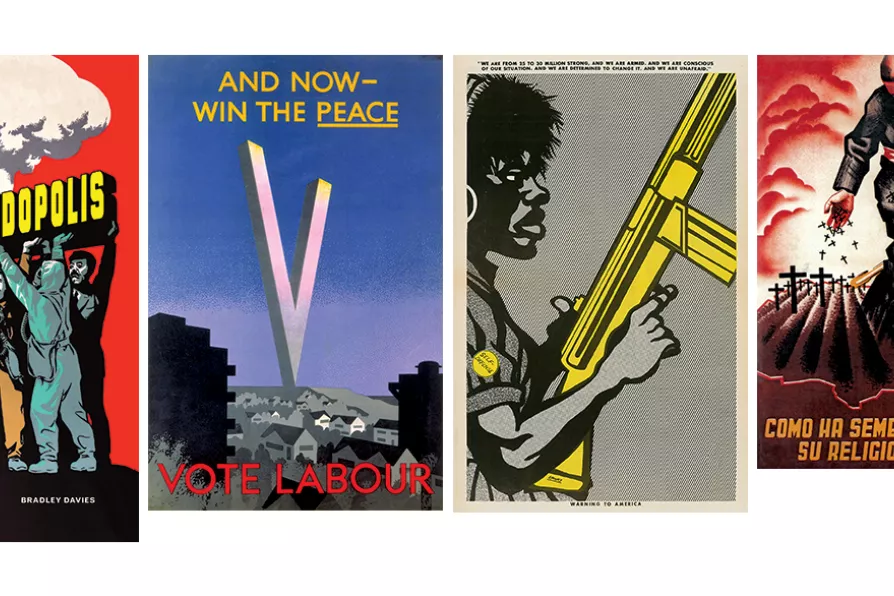ANDY HEDGECOCK picks out his cultural highlights of 2025

 (L to R) the book cover; Labour Party election poster 1945; A Black Panthers poster ‘Warning to America,’ 1970 designed by Emory Douglas; How the Church Sowed its Religion in Spain, a Civil War (1936-39) poster by the General Union of Workers (UGT) denouncing the Catholic priests collaboration with fascism
(L to R) the book cover; Labour Party election poster 1945; A Black Panthers poster ‘Warning to America,’ 1970 designed by Emory Douglas; How the Church Sowed its Religion in Spain, a Civil War (1936-39) poster by the General Union of Workers (UGT) denouncing the Catholic priests collaboration with fascism
Propagandopolis
Bradley Davis, Fuel, £24.95
WERE you to start a conversation about propaganda you’ll probably never hear the end of it with all parties “propagating” ad nauseam their take on it.
Its etymology is in the Catholic Church’s doctrine Congregatio de Propaganda Fide (Congregation for Propagating the Faith) made public in 1622 which was essentially a blueprint for dealing with the Reformation — to put it simply: to delay, at all costs, the political advance of the ideas of nascent capitalism.
During and after the advent of the French revolution in 1789 the term was extended to secular activities. In the English language it acquired a derogatory meaning in the 19th century, while in other languages it retains neutral or positive connotations.

JAN WOOLF is beguiled by the tempting notion that Freud psychoanalysed Hitler in a comedy that explores the vulnerability of a damaged individual

KEN COCKBURN assesses the art of Ian Hamilton Finlay for the experience of warfare it incited and represents












